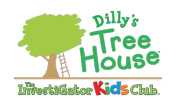
22 Oct 5 Halloween Tips from Educators: How to Blend Learning with Candy and Costumes
Halloween is an exciting event for families. Whether your little one is thrilled about dressing up as their favorite on-screen character or a career they’d like to emulate, the holiday provides a great opportunity for creativity and togetherness. In the interest of learning, we reached out to educators around the country and asked them how to make Halloween an educational opportunity for parents and children.
We LOVED all of the responses and especially appreciated the wide range of tips from nutrition to math, science, and imaginative play.
Here are our top five favorite Halloween tips from educators:
5. It doesn’t have to be about the candy.
“As nutrition and childhood obesity are at the forefront of child development, we use Halloween as the opportunity to discuss nutrition and healthy choices. The “Switch Witch” allows students to bring in their candy collected from trick-or-treating and to switch for a book and little gifts such as packets of crayons, markers, a ball, etc.” – Jane Lindland, Lil’ Sprouts of Essex
4. A perfect time for dancing and reading!
“Parents can play the song Danse Macabre by Camille Saint Saens and free dance (movement) with the children. For a craft, you could put rice in an empty plastic water bottle and shake it to the beat of the music. Read the book Dem Bones by Bob Barner and discuss the different types of bones and how they do their job for us to sit, stand, and move. An accompanying craft can be a skeleton with braids at the joints to be moveable. Also, poetry is great to read at Halloween. A book we enjoy is called Scared Silly! by Marc Brown.” – Harriet Stafford, retired teacher
3. Hone those math skills.
“Halloween is a great time to hone those early math skills in young children. If your child trick-or-treats for candy, use the “sweet” opportunity to sort colors, flavors or types of candy. Count each sorted pile and graph which candies were the most popular. You can even save the graph for comparison year after year. You can apply the same concept to costumes or decorations. While walking through your neighborhood count how many ghosts you see –witches, scarecrows. Which are the most popular pumpkin designs? Take notes while you trick-or-treat and graph once you get home. By engaging children with the environment around them, it increases their self-awareness and, as an added bonus, safety.” – Tammy Kaiser, MSJE, Temple Beit HaYam Early Childhood Learning Center
2. Use pumpkins for science.
“Pumpkins are great to use for Halloween. My children grow theirs from seeds, which is science. The different colors, orange, green, white and the size and shape of pumpkins. The children will weigh and measure the pumpkins. We cut them open to clean out the seeds, which we bake and season to eat. We bake pumpkin cookies and pies, which the children take home to share. They need to count out a dozen cookies and only one pie. Last we cut out faces on the pumpkin to use a battery lite inside. We learn not to use candles because they can cause a fire. Sometimes the children will paint their pumpkins. I always buy a plastic pumpkin to show the difference of real and fake. We also hide items in the plastic pumpkin. They watch the real pumpkin rot away which is smelly. There is so much you can do with pumpkins. Most of all the children have fun and learn to share with others.” – Karolyn Martin, Son-Shine Child Care
And we loved the following two tips so much they tied for the #1 spot and are both winners of our giveaway of a Dilly’s Tree House learning series.
1. Safety is key.

Deborah J. Stewart, M.Ed. has invested over 30 years in the field of early childhood education. She owns her own small private preschool called The Children’s Studio for children ages three to five years old.
“Halloween is a great time to talk about safety/opposites/color. Halloween Night Lights-on, Lights-off.
- Cut out yellow paper light bulbs and black colored light bulbs.
- Place a paper lightbulb on each door around your house or school.
- Bring a real lightbulb to discussion time.
- Talk about what it is, how it works, and the words on/off.
- Discussion: Show the children one yellow and one black paper light bulb and talk about how if the light is off, nobody is home. If the light is on, someone might be home.
- Ask the children questions about Trick or Treating like, “when is it safe to go to someone’s door?” And “who should go with you?” “What else do we need to think about?”
- Now take the child on a pretend trick or treat walk.
- Invite the child to put into practice what he/she learned by noticing the light bulbs on each door.
- Is the light on or off? What do we do? What do we say? And so on.
- Tip: If extra adults are around, they could stand inside doors with the yellow bulb and open it as the children come calling!”
-Deborah Stewart, Children’s Studio
1. Manners first.
 “Parents may use this opportunity to work on teaching manners by having their children add ‘Please’ to the end of ‘Trick-or-Treat’ and also to use ‘Thank you’. If they are working on numbers they can give their children a number and have them count their candy to that correct number as well as sorting their candy into many different categories i.e. all the chocolate, all the suckers, all the taffy or also sorting by size.”
“Parents may use this opportunity to work on teaching manners by having their children add ‘Please’ to the end of ‘Trick-or-Treat’ and also to use ‘Thank you’. If they are working on numbers they can give their children a number and have them count their candy to that correct number as well as sorting their candy into many different categories i.e. all the chocolate, all the suckers, all the taffy or also sorting by size.”
– Beth McCullough, EICAP-Head Start Birth to 5 Program
We hope that you have a fun and safe Halloween with your little ones and use these tips as learning opportunities. Do you have any other tips for us? Let us know in the comments!

Sorry, the comment form is closed at this time.